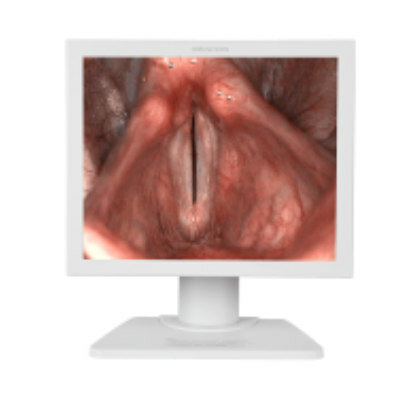Novel Index Could Identify Rapid Bone Loss Risk
|
By HospiMedica International staff writers Posted on 05 Jul 2016 |

Image: A new study describes a novel index that quantifies net bone formation and resorption, which may help identify women that experience fast bone loss across the menopause transition (Photo courtesy of UCLA).
Developed by researchers at the University of California, Los Angeles (UCLA; USA), and the University of Tokyo (Japan), the Bone Balance Index (BBI) estimates the relationship between resorption (urinary N-telopeptide) and formation (osteocalcin) markers. To create the index, the researchers used data from a cohort of 685 women between the ages of 42 and 52 as they went through menopause. The women were either premenopausal or in early perimenopause when they enrolled in the study, and had their final menstrual period during the follow-up period.
The researchers then combined measurements of bone breakdown and bone formation in the BBI with bone mineral density data in the women’s lumbar spine--as measured annually--to determine net bone balance before their final period. The researchers found that the BBI index was a stronger predictor of bone loss from two years before the final menstrual period to three to four years later--a time when bone density typically declines--than a measurement of bone breakdown alone in the lumbar spine alone. The study was published on June 23, 2016, in the Journal of Clinical Endocrinology & Metabolism.
“Researchers have previously shown that it is difficult to predict an individual's bone loss by testing the blood or urine for proteins that reflect either bone breakdown or bone formation alone,” said lead author Albert Shieh, MD, of the UCLA division of endocrinology. “Since both bone breakdown and bone formation occur at the same time in the body, we created an index that accounts for both processes, and tested whether this new index can help predict bone loss.”
“This novel approach to assessing an individual's bone health may help identify which women are at risk of losing vertebral bone mineral density across the menopause transition,” concluded Dr. Shieh. “More studies are needed to test whether this index is useful for predicting bone loss after the menopause transition, and if it is useful for predicting fractures. Since markers of bone breakdown alone have limited utility in predicting bone loss at an individual level, better approaches are needed to ensure individuals at highest risk of rapid bone loss are identified as quickly as possible.”
Osteoporosis is defined as a bone density of 2.5 standard deviations below that of a young adult, as measured by dual-energy X-ray absorptiometry. It is the most common reason for a broken bone among the elderly, and may be due to a lower than normal peak bone mass and a greater than normal bone loss. It is more common in women than men, with 2-8% of males and 9-38% of females affected after menopause, usually due to lower levels of estrogen.
Related Links:
University of California, Los Angeles
University of Tokyo
The researchers then combined measurements of bone breakdown and bone formation in the BBI with bone mineral density data in the women’s lumbar spine--as measured annually--to determine net bone balance before their final period. The researchers found that the BBI index was a stronger predictor of bone loss from two years before the final menstrual period to three to four years later--a time when bone density typically declines--than a measurement of bone breakdown alone in the lumbar spine alone. The study was published on June 23, 2016, in the Journal of Clinical Endocrinology & Metabolism.
“Researchers have previously shown that it is difficult to predict an individual's bone loss by testing the blood or urine for proteins that reflect either bone breakdown or bone formation alone,” said lead author Albert Shieh, MD, of the UCLA division of endocrinology. “Since both bone breakdown and bone formation occur at the same time in the body, we created an index that accounts for both processes, and tested whether this new index can help predict bone loss.”
“This novel approach to assessing an individual's bone health may help identify which women are at risk of losing vertebral bone mineral density across the menopause transition,” concluded Dr. Shieh. “More studies are needed to test whether this index is useful for predicting bone loss after the menopause transition, and if it is useful for predicting fractures. Since markers of bone breakdown alone have limited utility in predicting bone loss at an individual level, better approaches are needed to ensure individuals at highest risk of rapid bone loss are identified as quickly as possible.”
Osteoporosis is defined as a bone density of 2.5 standard deviations below that of a young adult, as measured by dual-energy X-ray absorptiometry. It is the most common reason for a broken bone among the elderly, and may be due to a lower than normal peak bone mass and a greater than normal bone loss. It is more common in women than men, with 2-8% of males and 9-38% of females affected after menopause, usually due to lower levels of estrogen.
Related Links:
University of California, Los Angeles
University of Tokyo
Latest Patient Care News
- Revolutionary Automatic IV-Line Flushing Device to Enhance Infusion Care
- VR Training Tool Combats Contamination of Portable Medical Equipment
- Portable Biosensor Platform to Reduce Hospital-Acquired Infections
- First-Of-Its-Kind Portable Germicidal Light Technology Disinfects High-Touch Clinical Surfaces in Seconds
- Surgical Capacity Optimization Solution Helps Hospitals Boost OR Utilization

- Game-Changing Innovation in Surgical Instrument Sterilization Significantly Improves OR Throughput
- Next Gen ICU Bed to Help Address Complex Critical Care Needs
- Groundbreaking AI-Powered UV-C Disinfection Technology Redefines Infection Control Landscape
- Clean Hospitals Can Reduce Antibiotic Resistance, Save Lives
- Smart Hospital Beds Improve Accuracy of Medical Diagnosis
- New Fast Endoscope Drying System Improves Productivity and Traceability
- World’s First Automated Endoscope Cleaner Fights Antimicrobial Resistance
- Portable High-Capacity Digital Stretcher Scales Provide Precision Weighing for Patients in ER
- Portable Clinical Scale with Remote Indicator Allows for Flexible Patient Weighing Use
- Innovative and Highly Customizable Medical Carts Offer Unlimited Configuration Possibilities
- Biomolecular Wound Healing Film Adheres to Sensitive Tissue and Releases Active Ingredients
Channels
Critical Care
view channel
CPR Guidelines Updated for Pediatric and Neonatal Emergency Care and Resuscitation
Cardiac arrest in infants and children remains a leading cause of pediatric emergencies, with more than 7,000 out-of-hospital and 20,000 in-hospital cardiac arrests occurring annually in the United States.... Read more
Ingestible Capsule Monitors Intestinal Inflammation
Acute mesenteric ischemia—a life-threatening condition caused by blocked blood flow to the intestines—remains difficult to diagnose early because its symptoms often mimic common digestive problems.... Read more
Wireless Implantable Sensor Enables Continuous Endoleak Monitoring
Endovascular aneurysm repair (EVAR) is a life-saving, minimally invasive treatment for abdominal aortic aneurysms—balloon-like bulges in the aorta that can rupture with fatal consequences.... Read more
Wearable Patch for Early Skin Cancer Detection to Reduce Unnecessary Biopsies
Skin cancer remains one of the most dangerous and common cancers worldwide, with early detection crucial for improving survival rates. Traditional diagnostic methods—visual inspections, imaging, and biopsies—can... Read moreSurgical Techniques
view channel
Robotic Assistant Delivers Ultra-Precision Injections with Rapid Setup Times
Age-related macular degeneration (AMD) is a leading cause of blindness worldwide, affecting nearly 200 million people, a figure expected to rise to 280 million by 2040. Current treatment involves doctors... Read more
Minimally Invasive Endoscopic Surgery Improves Severe Stroke Outcomes
Intracerebral hemorrhage, a type of stroke caused by bleeding deep within the brain, remains one of the most challenging neurological emergencies to treat. Accounting for about 15% of all strokes, it carries... Read moreHealth IT
view channel
Printable Molecule-Selective Nanoparticles Enable Mass Production of Wearable Biosensors
The future of medicine is likely to focus on the personalization of healthcare—understanding exactly what an individual requires and delivering the appropriate combination of nutrients, metabolites, and... Read moreBusiness
view channel
Philips and Masimo Partner to Advance Patient Monitoring Measurement Technologies
Royal Philips (Amsterdam, Netherlands) and Masimo (Irvine, California, USA) have renewed their multi-year strategic collaboration, combining Philips’ expertise in patient monitoring with Masimo’s noninvasive... Read more
B. Braun Acquires Digital Microsurgery Company True Digital Surgery
The high-end microsurgery market in neurosurgery, spine, and ENT is undergoing a significant transformation. Traditional analog microscopes are giving way to digital exoscopes, which provide improved visualization,... Read more
CMEF 2025 to Promote Holistic and High-Quality Development of Medical and Health Industry
The 92nd China International Medical Equipment Fair (CMEF 2025) Autumn Exhibition is scheduled to be held from September 26 to 29 at the China Import and Export Fair Complex (Canton Fair Complex) in Guangzhou.... Read more








.jpg)




